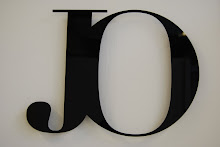Visual merchandising should be used to create impact, as the average shopper spends less than 11 seconds considering a window. It needs to talk fast, about the product, its price and more importantly its desirability. The design concept and development of a store will only work once you have recognised, who your consumer is and what they want from a store experience.
Research areas to consider;
- Visit different types of stores in the Knightsbridge area, with regards to design concept, materials, store names and aesthetic. Are there any similarities and is this due to the demographic location. Do a Comparative Shop.
- Store design of the Brands mentioned, with regards to location, materials, layouts, garment displays.
- Who is your target audience and why will they want to shop at your store? PEN PROFILE / SOCIO-ECONOMICS.
- What are your brand values?
- What will differentiate your store from your competition?
- Who is your competition?
- Will it be affected by the recession?
Visual merchandising;
- How frequently will the window displays be changed? Note: boutiques generally changed weekly, with garment up-dates to promote latest stock.
- Props? Permanent or non-permanent
- Where will the materials by sourced and why? Cheaper / quality / environmental / innovation
- Do you have a budget and are there any areas where you could save money?
Process stages;
- Comparative shop – research (photograph) stores for design inspiration
- Mood board – collate images found (secondary and primary research)
- Pick key garments / trends to promote in-store.
- Create a design scheme around the chosen trends. Note: the design scheme must be flexible, enabling you to up-date the store layout / windows.
- Send designs to suppliers for quotations
- Create a 2D example of your desired window / layout.
- Install in-store – the design should represent your stores values and encourage your consumer to want to shop.
Key elements used to communicate from Head office to stores are;
- Trend info – using info collected, create a trend booklet this will help direct and support decisions made at a later stage.
- Component positioning – computer generate example of how your garments/ props will be displayed in the window(s) and in-store.
- Garment positioning – key garments should be found at the front of the store. This should be monitored weekly to maximise product exposure.
- Layout – garments and accessories should be displayed throughout the store. Display key pieces on mannequins, with accessories to compliment.
- Mannequins - styled to promote and represent the key trends.
- Checklist – of all the visual merchandising elements and previous ideas.

No comments:
Post a Comment